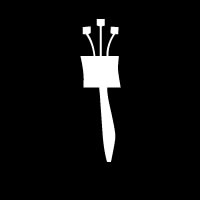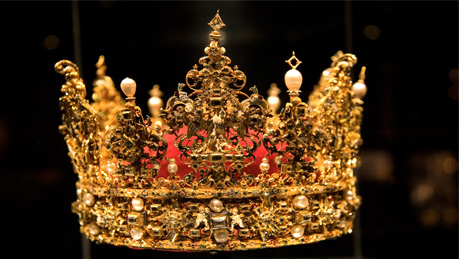Coming Full Circle: Eshet Chayil (Part 22)
By Sara Esther Crispe: March 2, 2016: Category Decoding the Tradition, Inspirations
Zamemma sadeh v’tikachehu, m’prei chapeha natah karem
“She considers a field and buys it; with the fruit of her palms she plants a vineyard.”
 A cute story is told of a husband and wife who have just finished eating dinner. They both had a long day and as the man begins to read the newspaper, the woman says she is exhausted and is going to head to bed. So she gets up and puts away the food, loads the dishwasher, makes the kids’ lunches for the next day, puts their homework in their backpacks, changes the clothes in the washer to the dryer, picks up the toys, picks out their clothes for the next day. And goes to bed.
A cute story is told of a husband and wife who have just finished eating dinner. They both had a long day and as the man begins to read the newspaper, the woman says she is exhausted and is going to head to bed. So she gets up and puts away the food, loads the dishwasher, makes the kids’ lunches for the next day, puts their homework in their backpacks, changes the clothes in the washer to the dryer, picks up the toys, picks out their clothes for the next day. And goes to bed.
About an hour later her husband stretches, yawns and says to himself that he is also really tired and is going to head to bed. And he does.
It is the classic joke between men and women. And it comes in various forms. The grocery list says “bread” so the man goes and buys a loaf of bread. The woman likewise enters the store with a list that has “bread” on it. She leaves the store an hour later with an overflowing cart.
Are these huge generalizations? Of course. Do they have a foundation in reality, yes. That is how most generalizations work.
As was discussed in the introduction, both men and women have masculine and female characteristics. So when we generalize, we speak of masculine or feminine traits. How that will manifest in individual men and women will vary based on that person.
So when it comes to the Kabbalistic understanding of gender, to simplify, men are compared to a line and women to a circle. The line is represented by the 6th letter in the Hebrew alphabet, the Vav, which resembles a human being standing upright. When we break it down by gender though, the Vav is the male. Wheareas the 7th letter, the Zayin, is compared to the female. It also stands upright, and almost looks like a Vav, but there is a crown on top.
It is the Maggid of Mezerich, the famous Chassidic master from the 1700s, who is noted for applying the phrase in connection to this letter: “Eshet chayil ateret ba’alah,” “the woman of valor is the crown of her husband.” The crown defines the king, for a king is not a king without a crown. And the crown is able to simultaneously be connected to the head while also rising above it. It is the ability to understand and empathize and yet to also see things from a different perspective, another vantage point. The crown is a circle. It surrounds, it gives purpose, meaning and definition to the line to which it is connected.
The idea of a line is being singularly focused. One dimensional. Hyper intense to a specific point. And it is an incredible quality and an essential one in certain situations. When a doctor is performing brain surgery, that person better act like a line. Male or female in gender, the approach must be the masculine one. No multi-tasking, no distraction, no greater picture…just what is being done.
Whereas in a circle, everything is equidistant from its center. We may be able to jump all over the place but it is all connected. It is all part of the process. So just as our brain surgeon better be like a line, whoever is running a business better be like a circle. You need to know how to simultaneously deal with customers, maintain peace and happiness amongst employees, train and direct managers and focus on the day to day with the long-term goals and success in mind.
There is no better or worse. Both are essential qualities. Both need to be utilized…but at different times. It is knowing which one is needed when that is the goal.
The letter Zayin is also the 7th letter which relates to the 7th day of the week, Shabbat. Shabbat is likened to the feminine. We refer to the Shabbat queen. The idea is that for six days we work, we are involved in the world, we are creating. But we also need to be able to stop. To recognize that there is a greater purpose. That there is a Divine reason for why we are doing what we are doing. That we are not the ultimate Creator. And that time is Shabbat.
 It is easy to think that Shabbat is the weekEND. After all, we have all the days of the week prior to Shabbat. This would be its masculine mode. But in Judaism Shabbat is often also considered the week center. All of the week surrounds Shabbat and is connected to Shabbat in a corresponding feminine modality. We even see in Jewish law that the Wednesday, Thursday and Friday prior to Shabbat are connected to the Shabbat to come, whereas the Sunday, Monday and Tuesday that follows are connected to the Shabbat that just passed. (This is why in Jewish law the official ending of Shabbat, the Havdalah service, can be said until Tuesday).
It is easy to think that Shabbat is the weekEND. After all, we have all the days of the week prior to Shabbat. This would be its masculine mode. But in Judaism Shabbat is often also considered the week center. All of the week surrounds Shabbat and is connected to Shabbat in a corresponding feminine modality. We even see in Jewish law that the Wednesday, Thursday and Friday prior to Shabbat are connected to the Shabbat to come, whereas the Sunday, Monday and Tuesday that follows are connected to the Shabbat that just passed. (This is why in Jewish law the official ending of Shabbat, the Havdalah service, can be said until Tuesday).
Shabbat is only 1/7 of the week, but what it lacks in quantity is makes up in quality. It is the purpose and focus of everything. It is the foundation. It is what gives definition to the other six days. They work together. They go hand in hand. And so too we see in this verse the idea of purchasing a field and planting a vineyard. All that will grow and sustain will come from these two. And likewise, it is Yocheved, the mother of Moshe, who is the foundation of the Jewish people. The one who not only births the Jewish leader, but the one who then has the ability to give him his basis and then hand him to the Egyptian palace. While it is there that he will spend the majority of his early life, it was with her where his life began. She is the Shabbat while the rest of the “week” is spent with Pharaoh. But as long as there is Shabbat, everything will have a purpose. For everything is interconnected. And ultimately, it all comes full circle.
In Part 23 we introduce the 8th verse of Eshet Chayil and head from the finite to the Infinite.
http://www.interinclusion.org/inspirations/birthing-new-realities-eshet-chayil-part-23/
http://www.interinclusion.org/inspirations/doing-what-needs-to-be-done-eshet-chayil-part-21/
Coming Full Circle: Eshet Chayil (Part 22),












;)
;)
;)
;)
;)
;)
;)
;)
;)
;)
